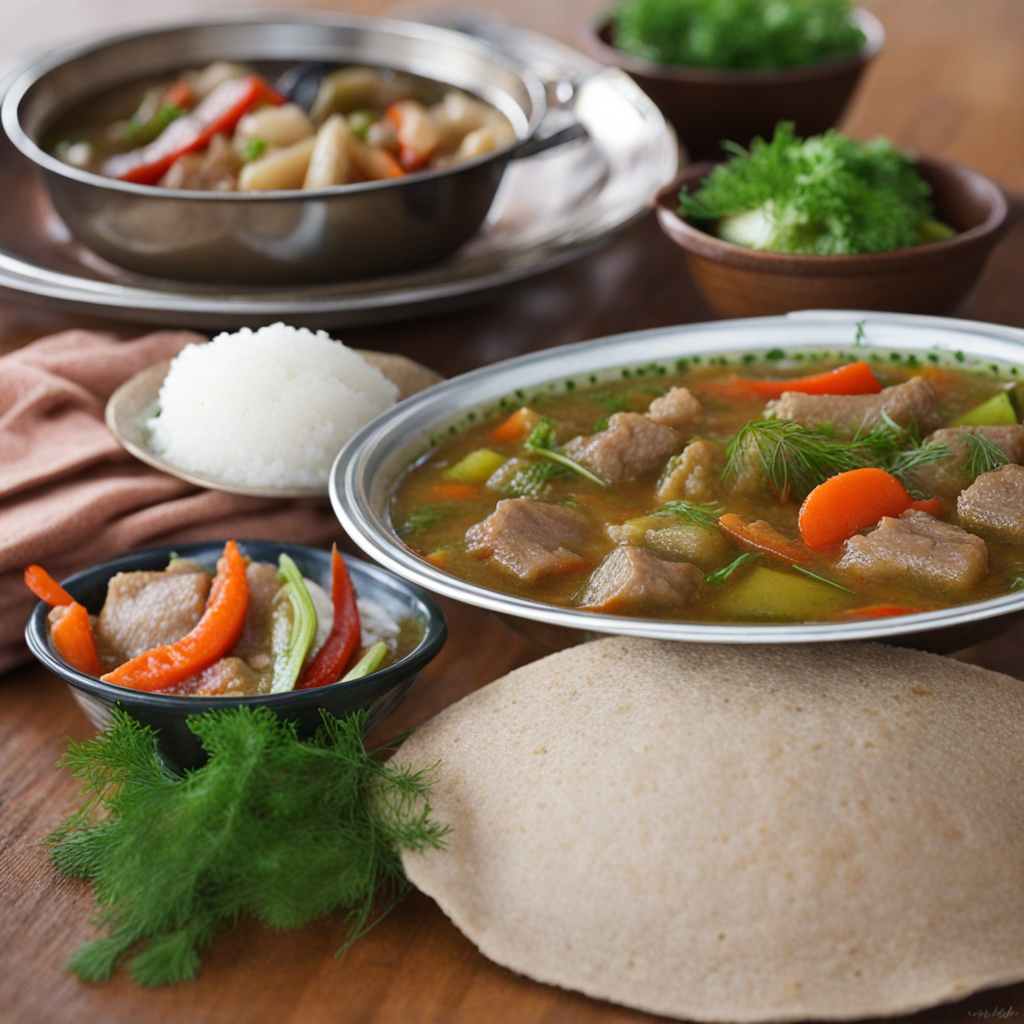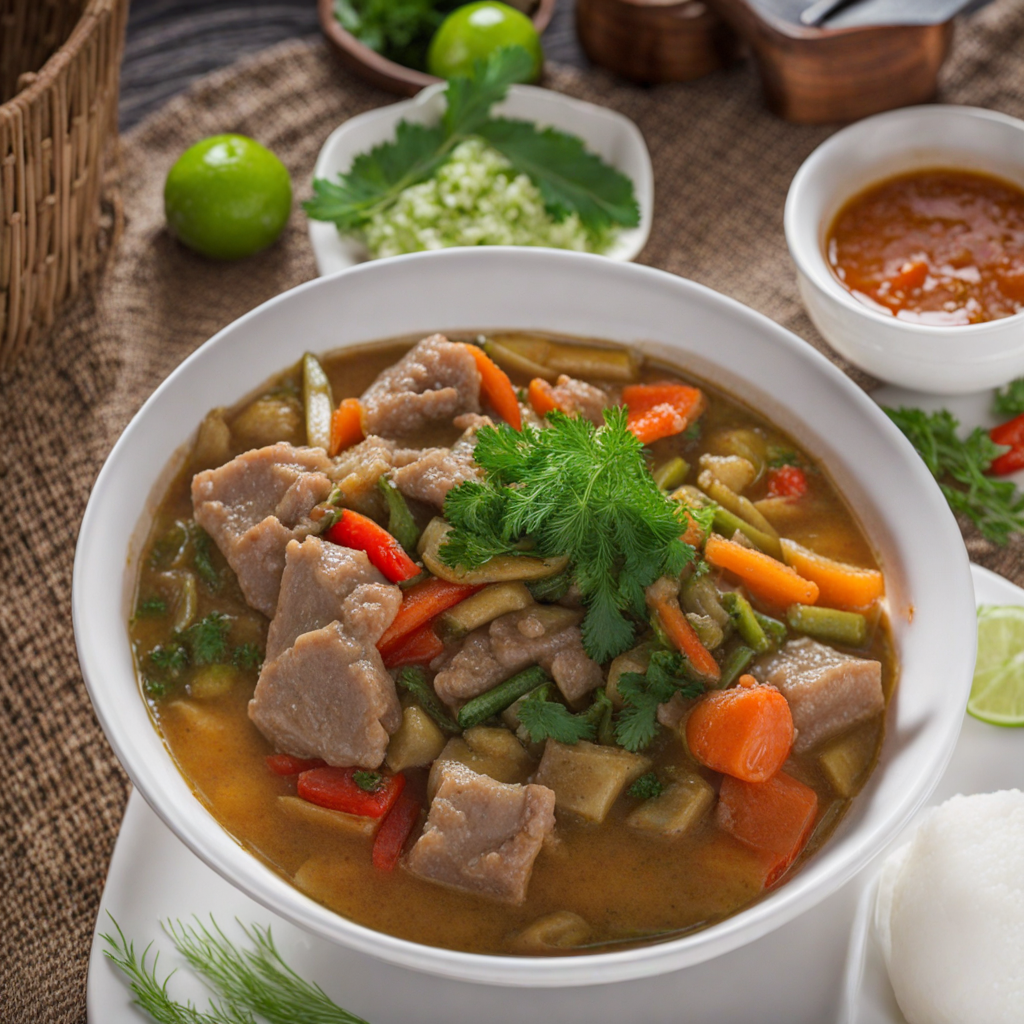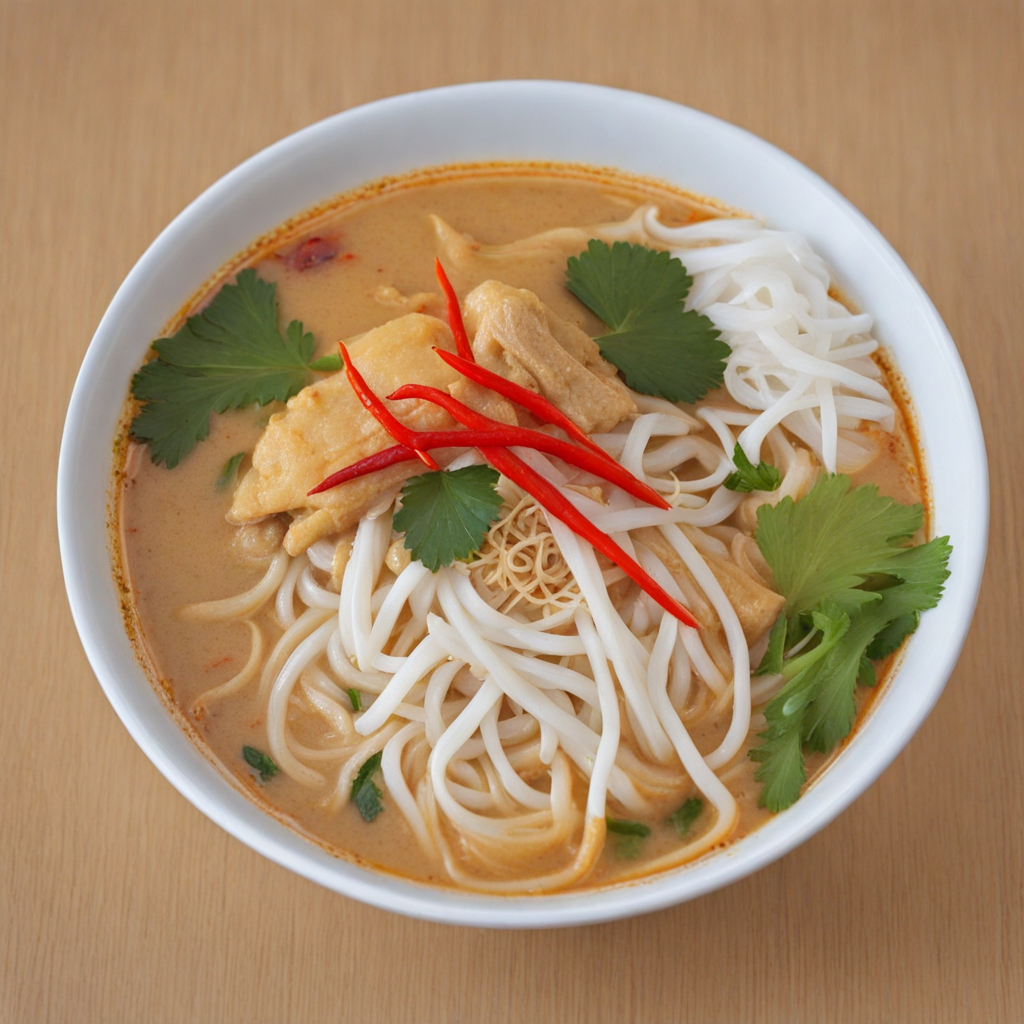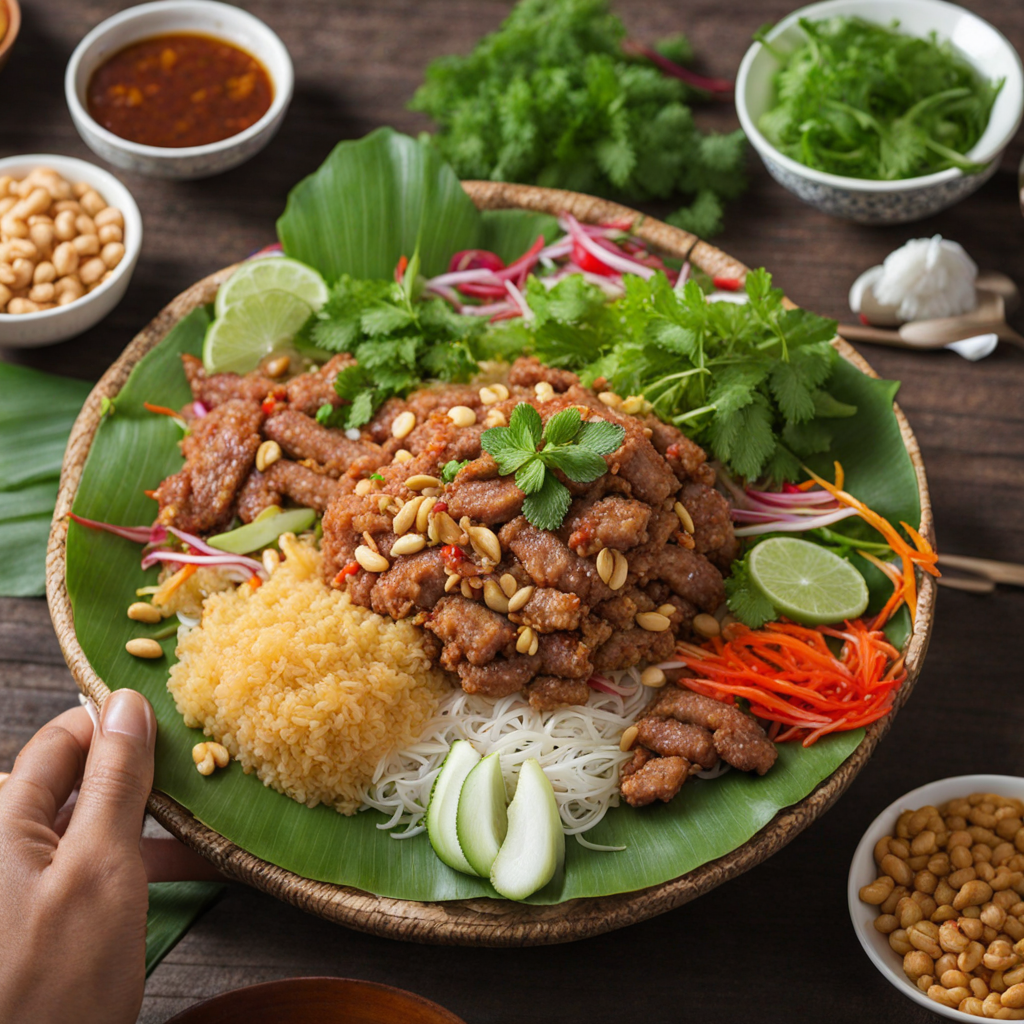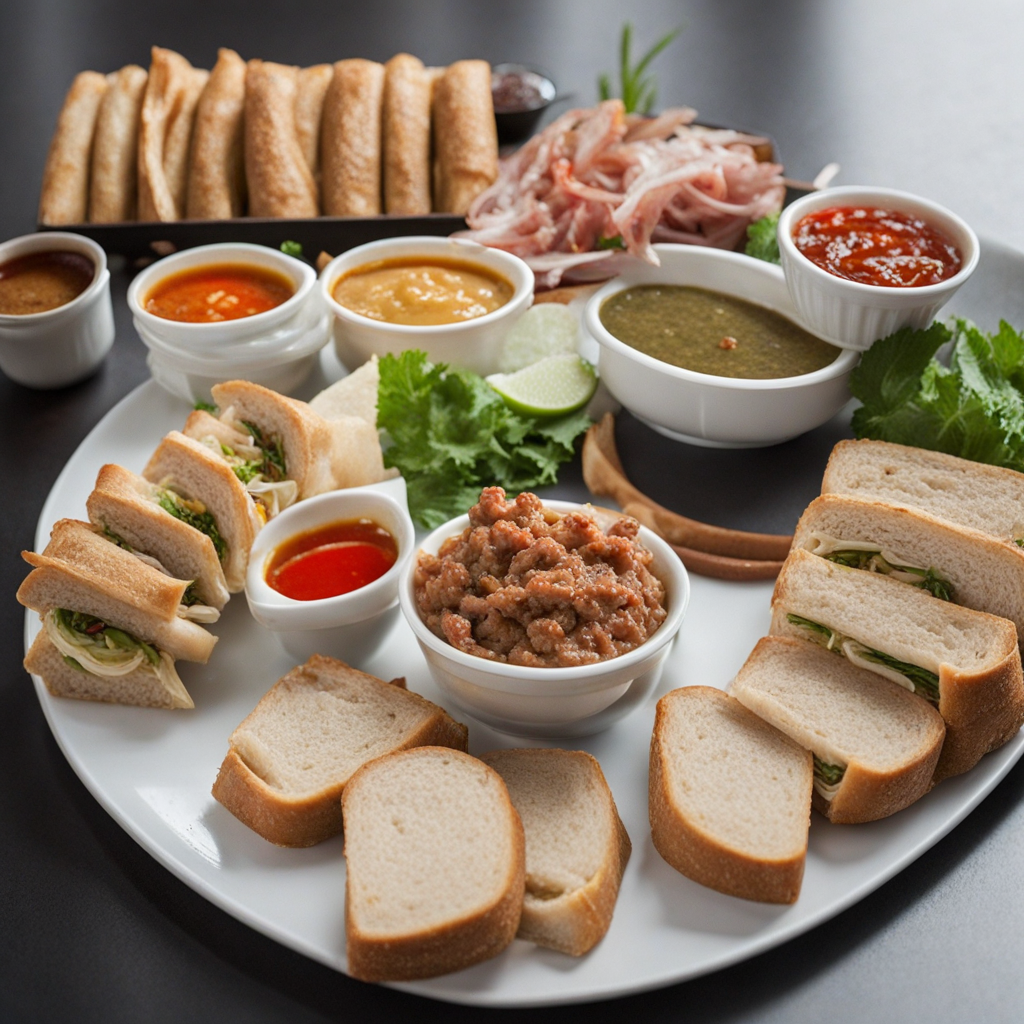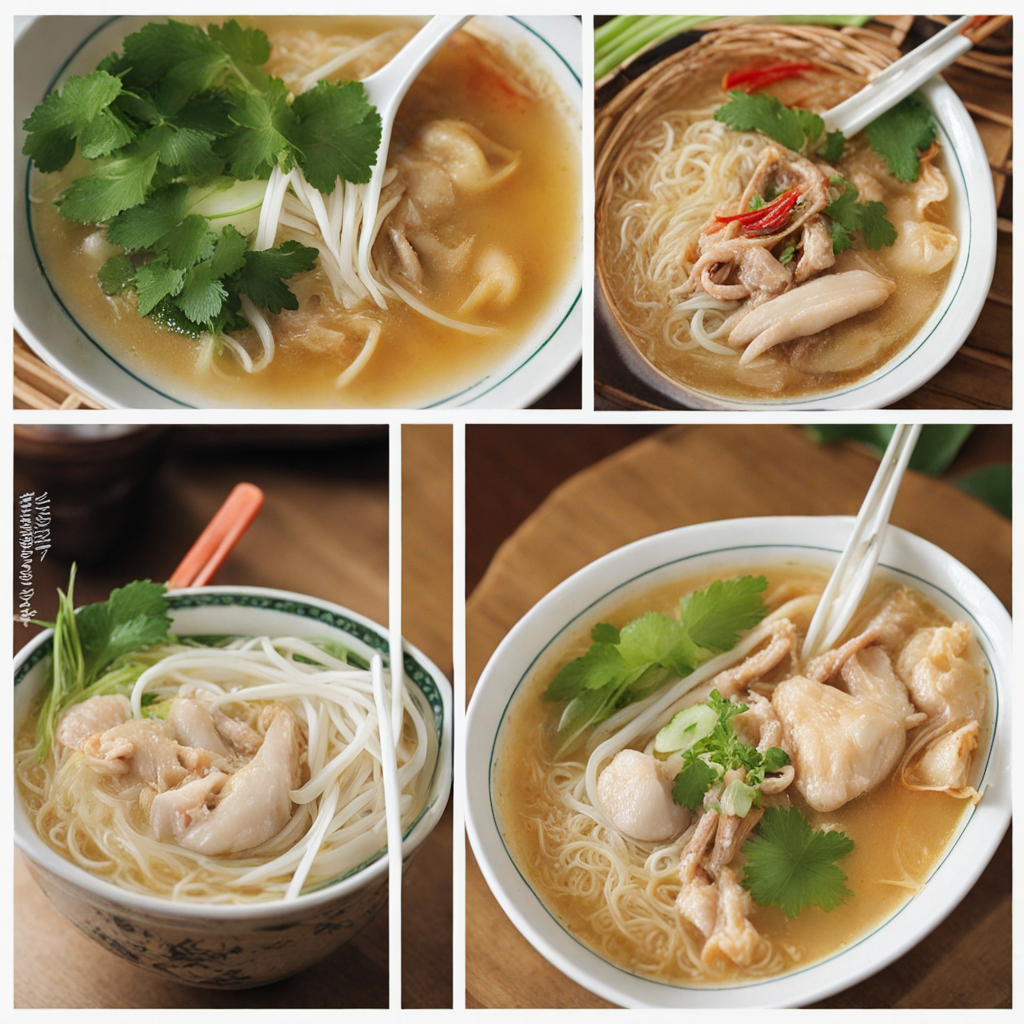Or Lam
Or Lam is a traditional Laotian dish that embodies the rich flavors and vibrant ingredients of the region. This savory stew is typically made with a combination of meat—often beef, buffalo, or chicken—and an array of fresh vegetables, herbs, and spices. The dish is slow-cooked to perfection, allowing the flavors to meld beautifully, creating a hearty and aromatic experience that delights the palate. The use of local ingredients such as lemongrass, galangal, and various greens adds a unique freshness that is characteristic of Laotian cuisine. What sets Or Lam apart from other stews is its distinctive use of fermented ingredients, particularly fermented bamboo shoots, which impart a tangy depth to the dish. The addition of Lao chili peppers gives it a gentle heat, while the herbs, including mint and coriander, provide a refreshing contrast. Traditionally, Or Lam is served with sticky rice, which perfectly complements the stew and allows diners to savor every drop of the flavorful broth. This dish is not only a feast for the taste buds but also a celebration of Laotian culture and community. Often prepared during festive occasions or family gatherings, Or Lam brings people together around the dining table, sharing stories and laughter over bowls of this comforting stew. With its rich flavors and communal spirit, Or Lam offers a true taste of Laos, inviting food lovers to explore and enjoy the diverse culinary landscape of this beautiful country.
How It Became This Dish
Origins of ໑ຣລຳ The dish known as ໑ຣລຳ (pronounced "larb" or "laab") hails from the rich culinary landscape of Laos, and its origins are deeply intertwined with the cultural and historical tapestry of the region. Larb is believed to have been created centuries ago, rooted in the traditions of the Lao people, particularly in the northern provinces. It is often considered the national dish of Laos and embodies the essence of Laotian cuisine, which emphasizes fresh herbs, spices, and the balance of flavors. The name "larb" is derived from the Lao language, where it refers to a type of meat salad that is typically made from minced meat, fish, or poultry, seasoned with lime juice, fish sauce, and an array of fresh herbs. The dish serves as both a celebration of local ingredients and a reflection of the agricultural practices in the region, where herbs and spices thrive in the fertile soil. Traditionally, larb was made with game meat, such as deer or wild boar, which was abundant in the forested areas surrounding Lao villages. Cultural Significance Larb is more than just a dish; it is a symbol of Laotian identity and cultural pride. It is often served during special occasions, festivals, and family gatherings, embodying the spirit of community and togetherness. In Laos, food plays a pivotal role in social interactions, and larb is frequently the centerpiece of communal feasting. Sharing a plate of larb is an act of bonding, where families and friends come together to enjoy the vibrant flavors and celebrate their heritage. In addition to its role in social gatherings, larb is also significant in religious and spiritual contexts. It is a common offering at Buddhist ceremonies and is often prepared to honor ancestors during important festivals. The preparation of larb can be seen as a ritualistic practice, as it involves careful attention to detail and an emphasis on using fresh, locally sourced ingredients. This underscores the connection between food, spirituality, and cultural traditions in Laos. Regional Variations As larb has developed over time, it has also adapted to the diverse cultures and culinary practices found throughout Laos. There are numerous regional variations of larb, each reflecting local ingredients and preferences. For example, in the northern regions, larb is often made with minced pork or chicken, while in the southern areas, it may feature seafood or beef. One notable variation is larb moo, which is made with minced pork and is perhaps the most well-known outside of Laos. This version is often garnished with roasted rice powder, adding a unique texture and flavor to the dish. In contrast, larb pla, made with fish, is popular in the riverine communities, showcasing the importance of freshwater fish in the Laotian diet. Another significant variation is the use of herbs and spices, which can vary based on the region's climate and agricultural practices. For instance, in the highlands, ingredients such as mint, cilantro, and lemongrass are prevalent, while more tropical areas may incorporate kaffir lime leaves and galangal. These regional differences not only highlight the diversity within Laos but also the adaptability of larb as a dish that can evolve with its surroundings. Modern Adaptations In recent years, larb has gained international recognition, appearing on menus in restaurants across the globe, particularly in Southeast Asian cuisine establishments. This exposure has led to modern adaptations of the dish, where chefs experiment with different proteins and flavor profiles. Some restaurants may offer vegan or vegetarian versions of larb, using tofu or tempeh as a substitute for meat, while still maintaining the essential flavors of the original dish. Additionally, the globalization of food culture has prompted the fusion of larb with other culinary traditions. Chefs may incorporate elements from Thai, Vietnamese, or even Western cuisines, creating innovative interpretations that appeal to a broader audience. This evolution reflects the dynamic nature of food as it travels and transforms, while also raising questions about authenticity and cultural preservation. Preservation of Tradition Despite these modern adaptations, there is a strong movement within Laos and among the Laotian diaspora to preserve the traditional methods of preparing larb. Culinary festivals and cooking classes are being organized to educate younger generations about the significance of this dish and the techniques involved in its preparation. The emphasis on using fresh, local ingredients has also seen a resurgence, as many seek to reconnect with their culinary roots and promote sustainable practices. Community events, such as "larb making" gatherings, have become popular, where families come together to prepare larb using traditional methods. These gatherings serve not only as a way to celebrate the dish itself but also as a means of passing down knowledge and skills from one generation to the next. In this way, larb remains a living tradition, continuously evolving while still honoring its rich history. Conclusion In summary, larb is a dish that encapsulates the heart and soul of Laotian cuisine. Its origins, cultural significance, and regional variations tell a story of a people deeply connected to their land and traditions. As the world continues to discover the flavors of Laos, larb stands as a testament to the resilience and adaptability of cultural practices in the face of modernity. Through both celebratory feasts and simple family meals, larb continues to be a cherished part of Laotian identity, embodying a legacy that will undoubtedly thrive for generations to come.
You may like
Discover local flavors from Laos


